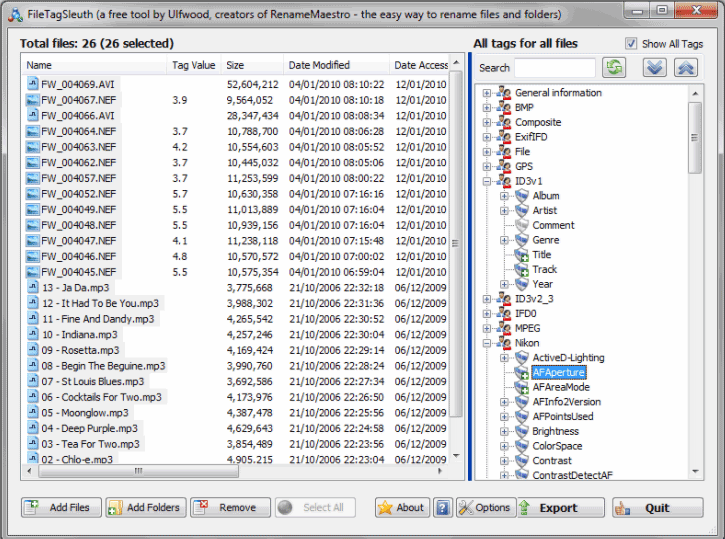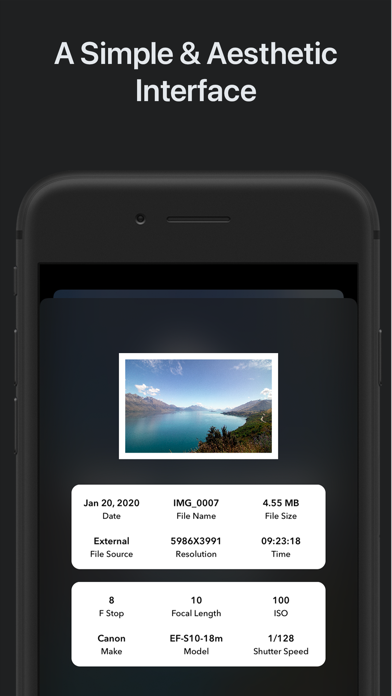

* Support for PTP/MTP transfer, iPhone, iPad * Allows to remove EXIF, IPTC and/or XMP headers from JPG-files * Batch change of capture date/time, works with JPG and RAW formats. From the top menu, select Tools, then Show Inspector. Method 2: Right-click the image, then select Open With, then Preview. Review the information to see the name of the file and its origins, dimensions, color profile, and other details. It even comes with a handy screenshot tool. Method 1: Right-click the image, then select Get Info. Metapicz What it is: Metapicz is a browser-based photo metadata viewer that exists solely to give users a chance to see metadata. You can do basic edits, add text to the images, apply a filter, or draw on the photo itself. The Top 7 photo metadata viewer tools available We’ve tested seven different photo metadata viewer systems and have concluded that the following check the most boxes.

Choose Photo Note: This program is implemented through the HTML5 feature of the browser. All features are based on browser-based HTML5 technology, no need to upload files to the server, safe and secure. It can also be used as a universal image editing tool, although the tools that it has can be a little of the light side for more people. Select a photo to instantly view the EXIF information for your photo. * Rename picture files keyed to the date and time as well as other photo information Apowersoft is more than a simple photo viewer.
METADATA PHOTO READER UPDATE
* Edit EXIF and IPTC metadata (full version only), add or delete tags, lossless rotate and update embedded thumbnails, in single file and batch mode File manager and fast viewer with slide show. Geotagging of photos with interactive map. Almost all new digital cameras use the EXIF annotation, storing information on the image such as shutter speed, exposure compensation, F number, what metering. Allows to edit metadata and adjust date/time picture taken - without destroying Makernote data or affecting the image quality. EXIF is short for Exchangeable Image File, a format that is a standard for storing interchange information in digital photography image files using JPEG compression.
METADATA PHOTO READER FREE
Free image browser that extracts all metadata from JPG and RAW files.

Just drag & drop or upload an image, document, video, audio or even e-book file. Parse the Exif attributes in the TIFF format.Viewer and photo data toolkit. is a free online tool that allows you to access the hidden exif & meta data of your files. Get the Exif attribute information segment from a JPEG file. The interfaces in this module are experimental and unstable.Ī struct that holds the parsed Exif attributes.Īn unsigned rational number, which is a pair of 32-bit unsigned integers.Ī struct to parse the Exif attributes andĬreate an Exif instance that holds the results.Ī signed rational number, which is a pair of 32-bit signed integers.Īn enum that indicates how a tag number is interpreted.Īn error returned when parsing of Exif data fails.
METADATA PHOTO READER UPGRADE
See the upgrade guide for API incompatibilities. Different image files contain different metadata. You will see the information about the camera and the settings with which the photo was taken. Remove EXIF data from the image to protect your personal info. Find when and where the picture was taken. Click the Details tab and scroll down until you find the metadata photos section you want. Uncover hidden metadata from your photos. All you need is to right-click on the photo and select Properties. EXIF Viewer is a handy tool that lets you view all kinds of information stored in JPEG files you have saved on your computer. None = > eprintln !( "XResolution tag is missing"), It is very easy to view EXIF data on Windows. _ = > eprintln !( "XResolution value is broken"), get_field( Tag:: Orientation, In:: PRIMARY) ", v), `Value::get_uint` is provided for that purpose. You could match `orientation.value` // against `Value::Short`, but the standard recommends that readers // should accept BYTE, SHORT, or LONG values for any unsigned integer // field. See locations where photos were taken on a map (if location information was recorded).


 0 kommentar(er)
0 kommentar(er)
